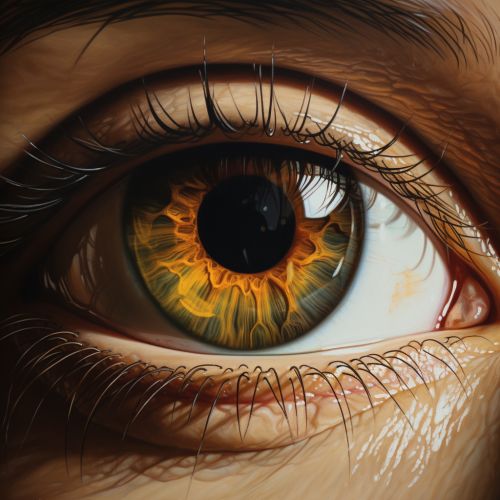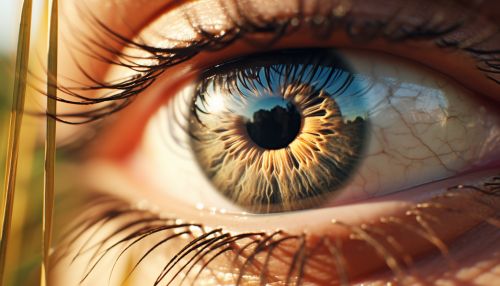Contrast (vision)
Introduction
Contrast in vision refers to the difference in color and light between parts of an image. It is a key aspect of human visual perception, allowing us to distinguish objects from their background and from each other. The human visual system is highly sensitive to contrast, which plays a crucial role in many visual tasks such as object recognition, reading, and navigation.
Physiological Basis
The physiological basis for contrast perception begins in the retina, the light-sensitive layer of tissue at the back of the eye. Here, light entering the eye is converted into electrical signals by photoreceptor cells known as rods and cones. Rods are more sensitive to light and dark changes, size, and shape, while cones are more sensitive to color changes.
The retina contains two types of photoreceptor cells: rods, which are sensitive to low light levels and provide black-and-white vision, and cones, which are responsible for color vision and require higher light levels. The signals from these cells are processed by other cells in the retina, including bipolar cells and ganglion cells. These cells respond to differences in light intensity between adjacent areas of the visual field, effectively enhancing the contrast in the image.


Contrast Sensitivity
Contrast sensitivity is the ability to detect differences in luminance between two areas. It is often measured using a contrast sensitivity function (CSF), which plots the minimum contrast required to detect a sinusoidal light-dark pattern at different spatial frequencies. The CSF typically shows a peak sensitivity at intermediate frequencies, reflecting the fact that the human visual system is optimized to detect contrasts at these frequencies.
Contrast sensitivity can be affected by a number of factors, including the level of illumination, the observer's age, and the presence of ocular diseases such as glaucoma or macular degeneration. It is also an important factor in many practical applications, such as the design of displays and the readability of text.
Contrast and Color
Contrast is not only a matter of differences in light and dark, but also of differences in color. This is because the human visual system processes color and luminance information separately, a phenomenon known as color opponency. The three types of color-opponent cells are red-green, blue-yellow, and black-white. These cells respond to differences in the wavelengths of light stimulating different parts of the retina, creating the perception of color contrast.
Color contrast can be quantified using various models, such as the CIE L*a*b* color space. This model represents colors in three dimensions: L* for lightness, a* for the red-green axis, and b* for the blue-yellow axis. The difference between two colors can then be calculated as a distance in this space.
Contrast Perception in Art and Design
Contrast is a fundamental element in art and design, used to create visual interest and direct the viewer's attention. Artists and designers manipulate contrast in various ways, such as through the use of complementary colors, differences in light and dark, or juxtaposition of different shapes or textures.
In graphic design, contrast is often used to improve the readability of text. High contrast between text and background (for example, black text on a white background) generally improves readability, while low contrast can make text harder to read. However, too much contrast can also be uncomfortable to the eye, so a balance must be struck.
